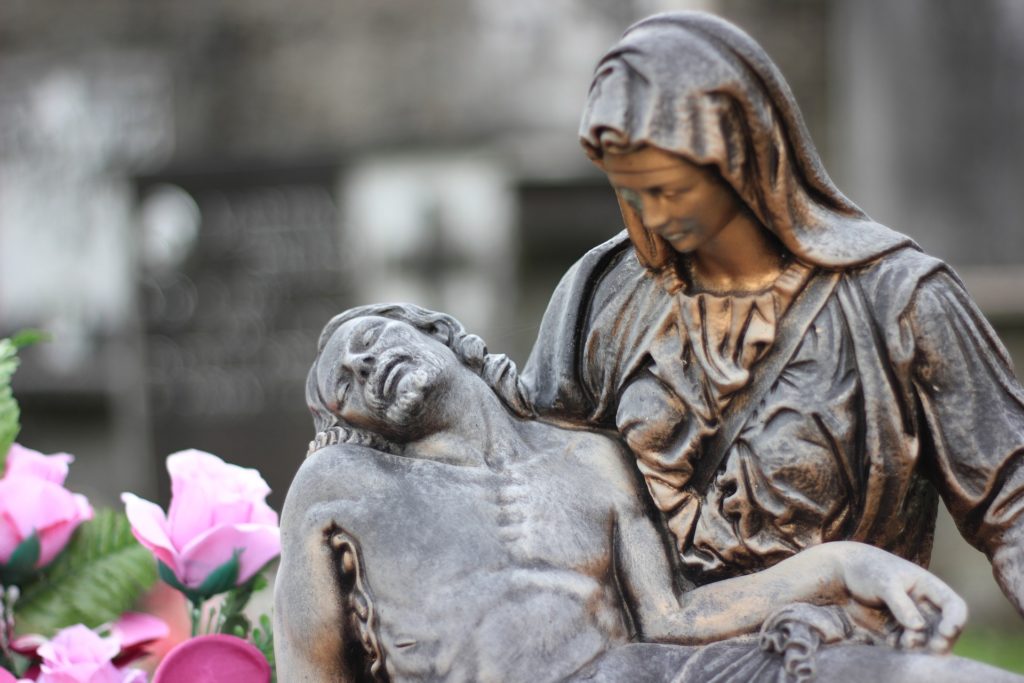
There have been several important studies related to the anxiety that often accompanies the diagnosis of cancer. Interestingly it’s not always about a fear of death or the disease itself, but anxiety over the quality of relationships in a person’s life. One of the most important points to be made is that people are capable of extending love to others right up until their last breath. There is always a choice to be made in how we find meaning. Psychedelics seem to have great potential to be able to expand consciousness in preparation for the final transition. They also seem to have significant capacity to reduce suffering.
People dying in Western societies also often lack effective human support that would ease their transition. We try to protect ourselves from the emotional discomfort that death induces. The industrial world tends to remove sick and dying people into hospitals and nursing homes. The emphasis is on life support systems and mechanical prolongation of life, often beyond any reasonable limits, rather than the quality of the human environment. It’s hard to express the loneliness & fear that is often felt by patients as they approach the end. It’s becoming clearer now that psychedelics can offer relief and are well worth more exploration .
Between the years 1967 and 1972, studies with terminal cancer patients by Grof and colleagues at Spring Grove showed that LSD combined with psychotherapy could alleviate symptoms of depression, tension, anxiety, sleep disturbances, psychological withdrawal, and even severe physical pain that was resistant to opiates. It also improved communication between the patients and their
loved ones. Later studies also explored the adjunctive use of psychotropic agents for pain relief. This was from the conventional perspective using anti-depressants but it demonstrated that there is definite role for agents that target the mental aspects of pain.(3) In the work of Stanislav Grof and Joan Halifax (1977), dying cancer patients who volunteered to participate were offered the opportunity to have one or more sessions-preceded by extensive preparation and counseling in which they would receive an administration of LSD or DPT. The primary therapeutic objective of this research was to provide dying patients with, in effect, a functional equivalent of an NDE (near-death experience) before they died. It was hoped that by doing so, patients would be able more easily to come to terms with their own impending death, to resolve unfinished business with family members, and to live more fully until they died. In general, these results were found for the majority of the patients. In many instances the typical features of NDEs were evoked.
Quoting the words of Grof himself (1985), “According to the new data, spirituality is an intrinsic part of the psyche that emerges quite spontaneously when the process of self exploration reaches sufficient depth. Direct experiential confrontation with the [deep] levels of the unconscious is always associated with a spontaneous awakening of a spirituality that is quite independent of the individual’s childhood experiences, religious programming, church affiliation, and even cultural and racial background. The individual who connects with these levels of his or her psyche automatically develops a new world view within which spirituality represents a natural, essential and absolutely vital element of existence.”
Psychedelics (including LSD and psilocybin) have been shown to lessen the fear of death. (1) The lessening of fear has been compared to how people often have less fear after a near-death experience. (2) Long lasting positive effects and spiritual significance have been noted.
Papers in the 60s by Eric Kast showed an alleviation of pain in addition to the aforementioned benefits related to lessening the fear of impending death. He studied 50 patients, 39 of which had cancer. Patients were also able to sleep better. (4) A paper in 1985 explored LSD for terminally ill cancer patients and observed again the enormous potential in terms of softening entrenched attitudes and defensive patterns, thus enabling deeper levels of healing and awareness. (5) In approximately one third of the patients the fear of death was overcome, accompanied by a relief of their depression, isolation and sense of alienation. Another third felt that they had been helped and moved by the experience, but were not able to obtain dramatic relief. The remaining third were nonreactors who were neither helped nor harmed by the experience.
Despite numerous promising results, the hardening of drug laws put research into a deep freeze for decades. This decades-long research blackout ended in 1999 when Roland Griffiths of Johns Hopkins was among the first to initiate a new series of studies on psilocybin. Griffiths has been called the grandfather of the current psychedelics research renaissance, and a 21st-century pioneer in the field. Switzerland also contributed to the revival into therapeutic LSD research, which is fitting since that was where Albert Hoffman came from. Peter Gasser was allowed to conduct research into LSD there in terminally ill cancer patients in late 2007.
To summarize, in a world where so many face the end of life with fear and trepidation, we need all tools at our disposal in order to ease our passage. For those who perhaps have neglected the spiritual side of life or have too much physical or mental trauma, psychedelics can play a key role as medicinal agents. It seems that quality of life can be enhanced by the usage of these substances and with the numerous positive results in the literature so far, research should be supported in the ongoing revolution in healthcare. Although the psychedelics are not a substitute for a spiritual life, they can serve as great catalysts as we transition through our path towards our inevitable end. Perhaps through our continued explorations psychedelics will be more properly recognized as medicine and used appropriately to aid in our collective evolution.
REFERENCES
- https://www.hopkinsmedicine.org/news/newsroom/news-releases/psychedelics-may-lessen-fear-of-death-and-dying-similar-to-feelings-reported-by-those-whove-had-near-death-experiences
- https://journals.plos.org/plosone/article?id=10.1371/journal.pone.0271926
- Breitbart, W. (1989). Psychiatric management of cancer pain. Cancer, 63, 2336-2342
- https://journals.lww.com/anesthesia-analgesia/Citation/1964/05000/Study_of_Lysergic_Acid_Diethylamide_as_an.13.aspx
- Kurland, A. (1985). LSD in the supportive care of the terminally ill cancer patients. Journal of Psychoactive Drugs, 17(4), 279-290. https://www.semanticscholar.org/paper/LSD-in-the-supportive-care-of-the-terminally-ill-Kurland/c0e4b5a56722498af9a4ee1ae905a3d9c2839d73
